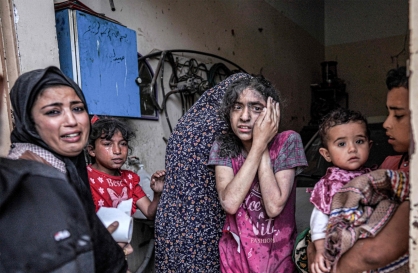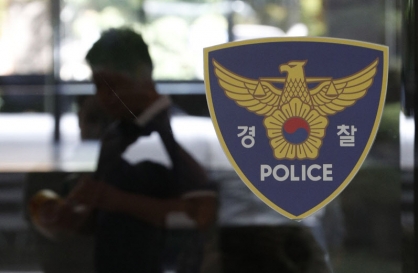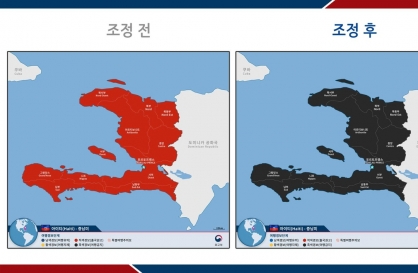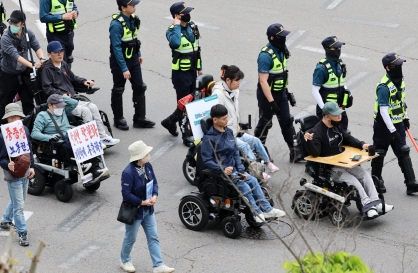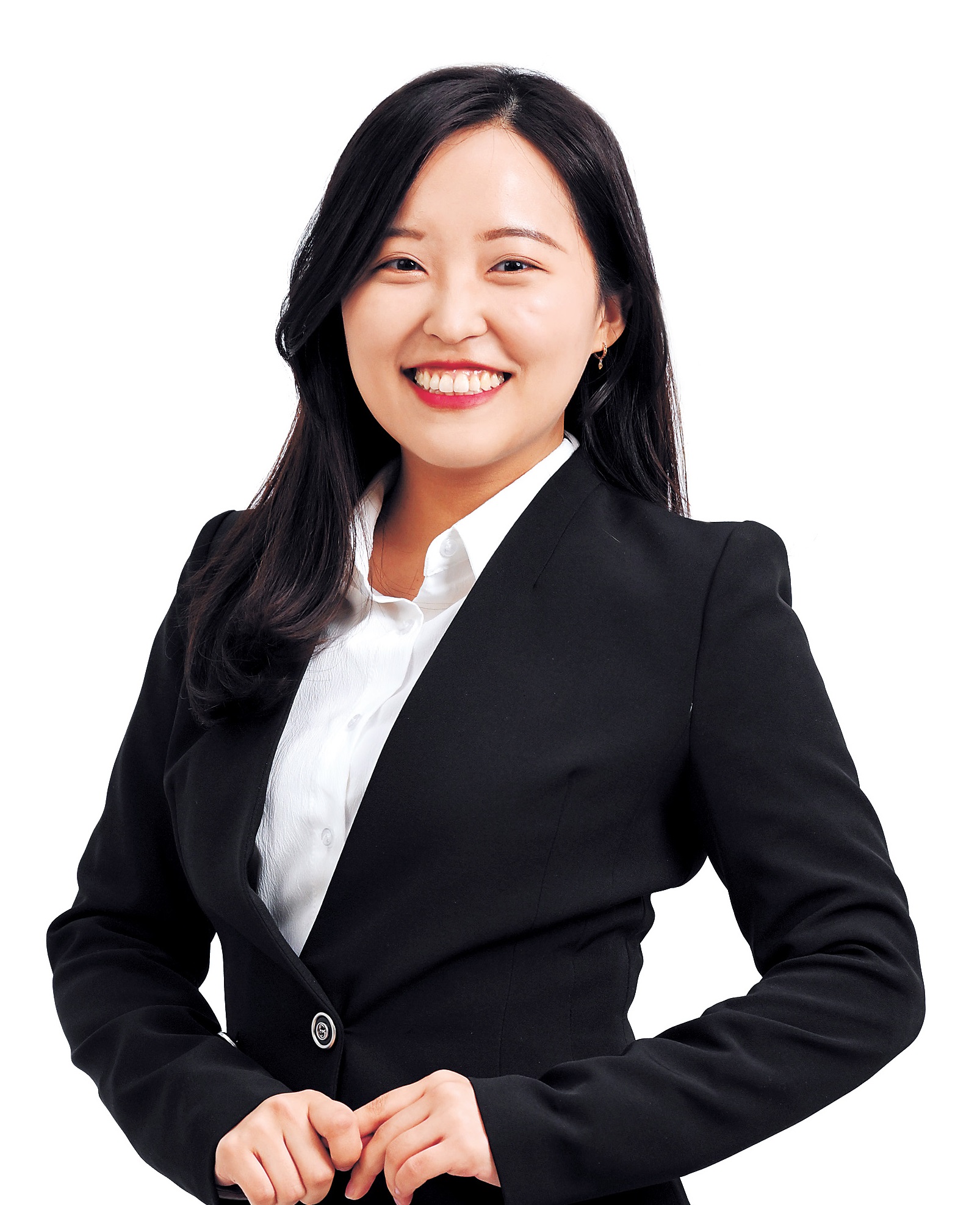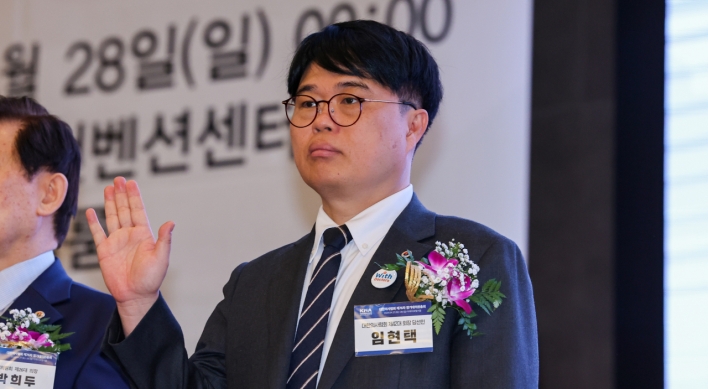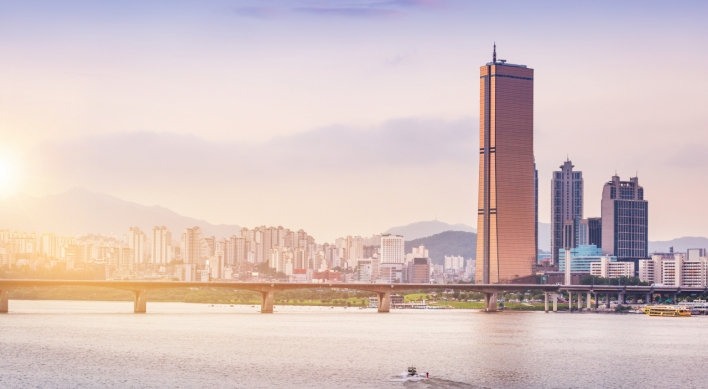[Community Discovery] Blending old and new for sustainable Seongdong-gu
Turning former factory site into cultural space, urban regeneration project in Seongdong offers alternative development model
By Lee Jung-jooPublished : Nov. 13, 2023 - 19:42
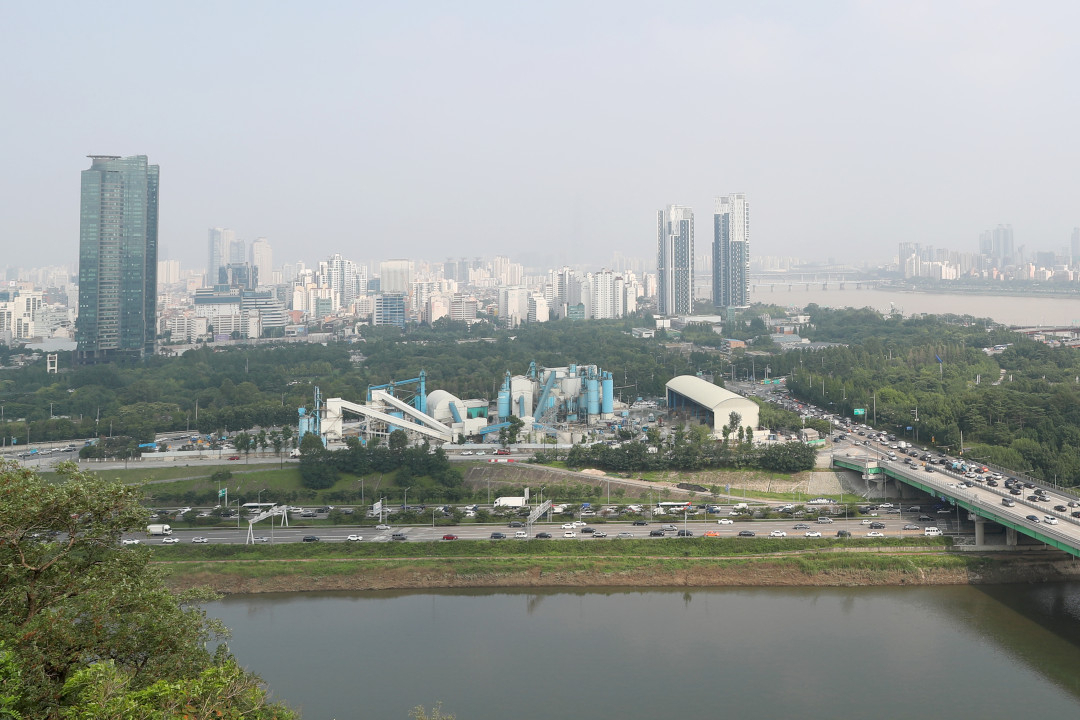
The urban regeneration project for Seongdong-gu in eastern Seoul fosters ways both to attract new visitors and enhance existing residents' lives while advocating for the coexistence of the district’s older and new buildings and communities.
“Seongdong-gu will become a sustainable cultural district through the urban regeneration project, which promotes ‘coexistence’ as its core value,” said Seongdong-gu head Chong Won-o during a press tour on Oct. 26.
As a core project, the district office plans to transform a factory site occupied by ready-mix concrete manufacturer Sampyo Remicon for the past 45 years in Seongsu-dong, a neighborhood located in Seongdong-gu, eastern Seoul.
The 22,700-square-meter factory was demolished on Aug. 16, 2022 and is being turned into an outdoor culture and leisure venue for the public to enjoy events such as concerts for the next two years. One part of the site covering 8,507 square meters, or almost 40 percent of its total area, has already been developed to host indoor and outdoor performance venues.
By the end of November, almost half the site will be converted into a public parking lot, along with a new grass field.
Chong stated that the performance venues will be able to seat up to 10,000 people and the field will be able to accommodate 5,000, similar in size to the Olympic Gymnastics Arena in Jamsil, southern Seoul.
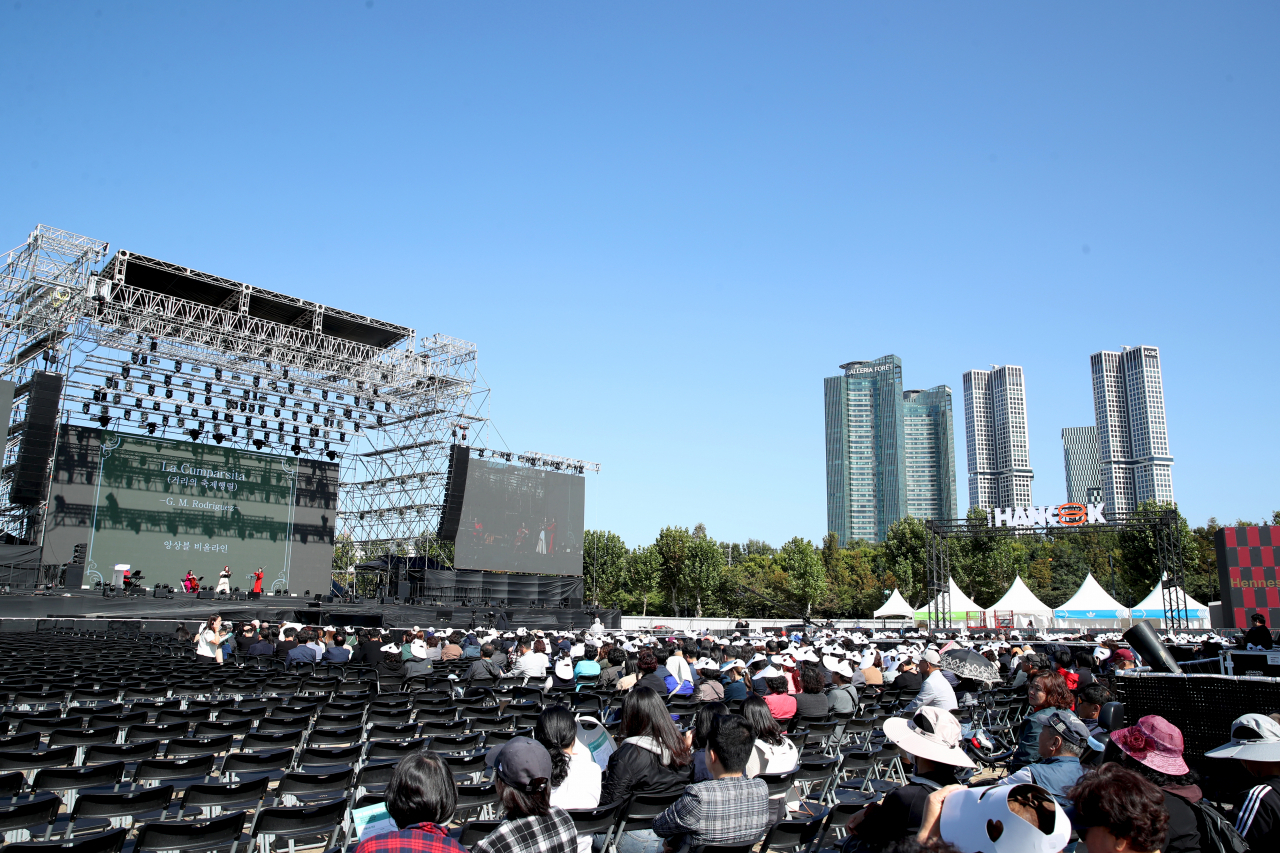
“The district office received several complaints in the past regarding construction dust when Sampyo Remicon was still on site. Therefore, we believe that the area should be transformed into a space that residents can utilize and enjoy,” said Chong.
He added that having a performance venue on the site would contribute to the urban regeneration of the area socially and culturally as it will "strengthen the district's cultural capacity" and prevent the site from being used solely for commercial purposes. Developing Sampyo Remicon's factory site into a cultural space has been a part of Seongdong-gu's Urban Development Plan, which was released in May last year to be achieved by 2040.
The Seoul Metropolitan Government says it plans to start construction in 2025 of what would become one of the world’s largest startup campuses. District head Chong, on the other hand, has repeatedly stated in press interviews that he envisions building a cultural center there, such as an opera house. A Seongdong-gu official told The Korea Herald that whether Chong’s vision for transforming the ready-mix concrete plant site into a cultural center will be implemented in the Seoul Metropolitan Government’s plan is something that needs to be discussed further with the city government.
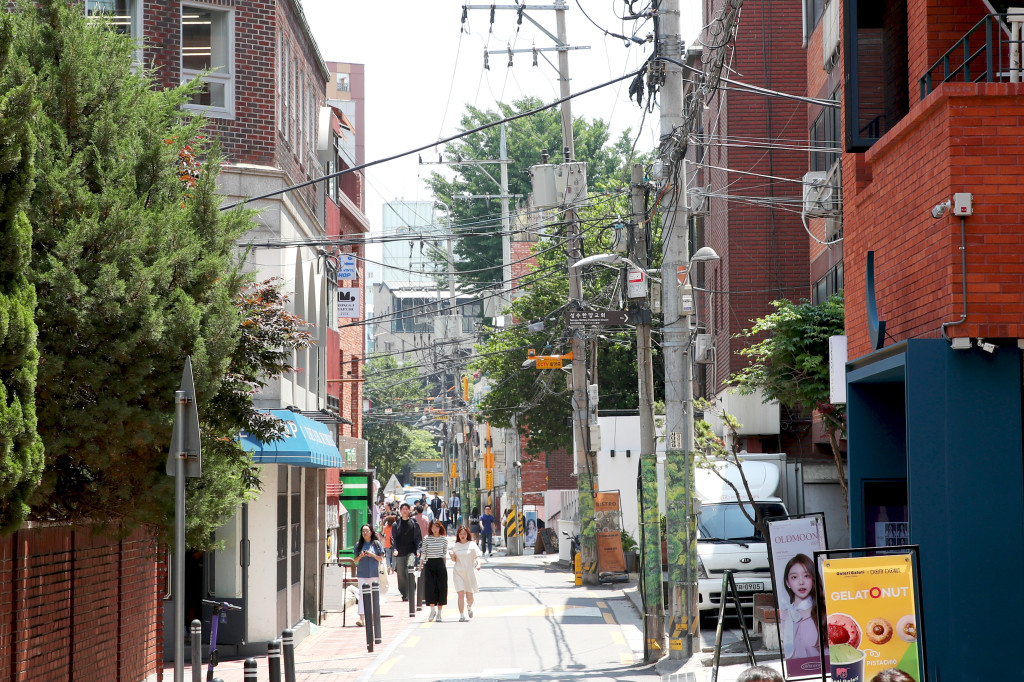
Seongsu-dong is a district popular with young people who come for the district’s hip shops and cafes that are unique to the area. It has also recently become a popular tourist destination, particularly for those from China and Japan.
Visitors who frequent Seongsu-dong say they enjoy visiting the district for its one-of-a-kind character.
“If you have plans to visit Seongsu-dong, you know you’ll be able to go to nice restaurants and cafes that not only serve good food and drinks but also have unique and hip areas that you can take photos at and of,” a visitor to the area told The Korea Herald.
“The old alleys blend in well with its trendy and new establishments,” said the woman surnamed Jeong.
Seongsu-dong’s unique, diverse atmosphere -- a mix of older residential buildings, existing small businesses and trendy new cafes, restaurants and even pop-up stores -- has resulted in part from the urban regeneration project in Seongdong-gu.
Urban regeneration is an alternative to urban redevelopment focused on improving existing urban areas through adaptively reusing and remodeling them. Rather than demolishing and rebuilding an entire area, forcing out existing tenants in favor of those who can pay higher rents, the district focuses on preserving the neighborhood’s historical character while bringing additional economic benefits to existing tenants.
Seongsu-dong was designated as an urban regeneration project site in 2014, and in 2017, Seongdong-gu released a set of sustainable development policies to address concerns related to possible gentrification by promoting and supporting local businesses and curtailing the influx of new franchises.
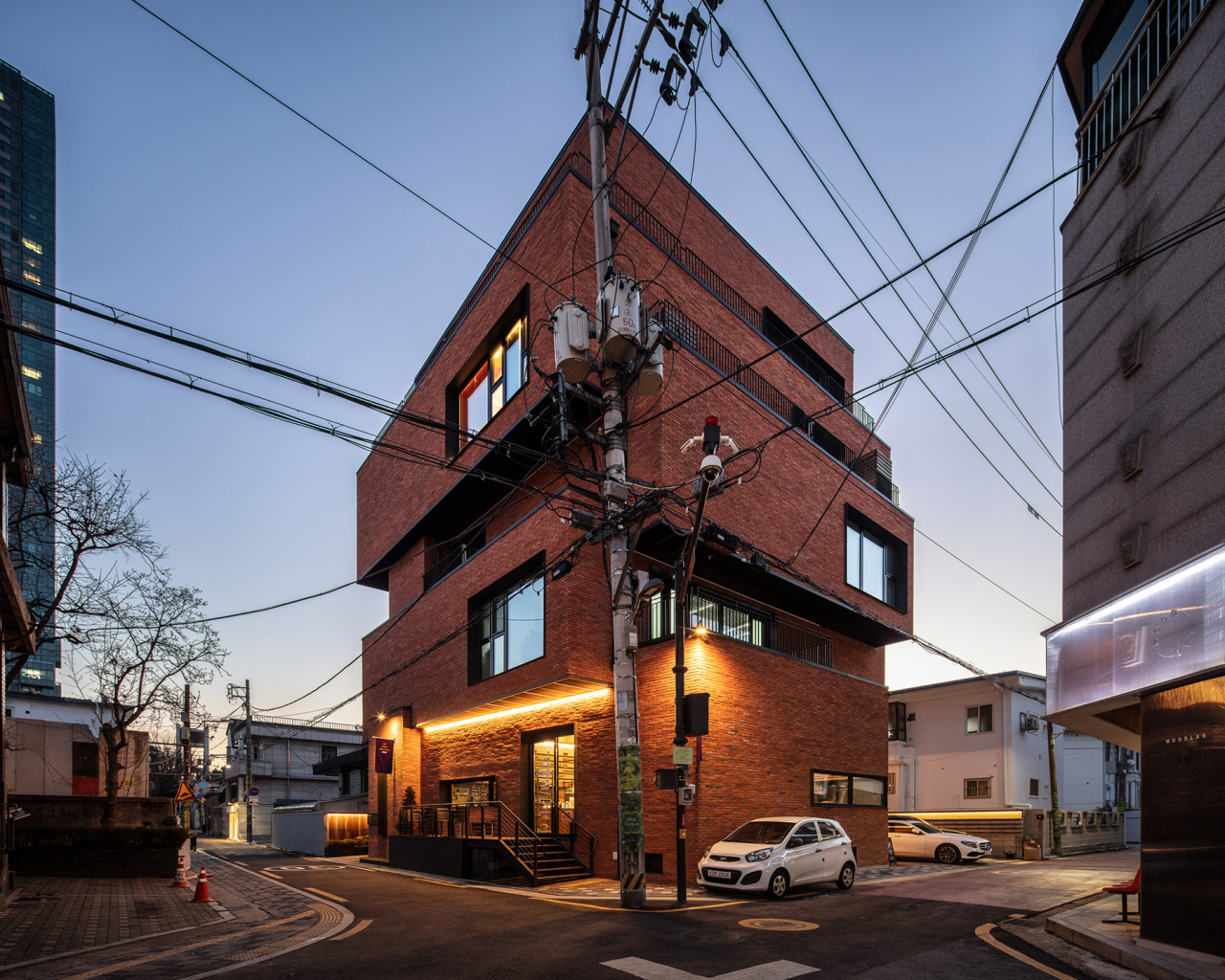
For example, the district designated Seongsu-dong’s Seoulsup-gil as a “sustainable development zone,” by incentivizing existing businesses in the area to decorate their exteriors with red bricks -- a characteristic feature of the street’s architecture -- and by restricting large franchises from opening up new branches there.
As a result of this initiative, the street became well known for its unique urban fabric and for having local businesses that can’t be found elsewhere.
“The development of a city doesn’t have to equate to 'redevelopment,'” stressed Chong. “Some areas that lack infrastructure can be redeveloped while areas with strong identities can thrive through regeneration or adaptive reuse. Seongsu-dong is one such district where all of these things exist in combination.”
Seongdong-gu’s strategy of supporting local businesses along Seoulsup-gil was based on the long-term goal of nurturing and maintaining the neighborhood’s distinctive culture to benefit both landlords and tenants in the long run. According to the district, 75 percent of the area's landlords supported this concept. Seongdong-gu aims to widen this sustainable development strategy to apply to all of Seongsu-dong.
As part of its active support of the sustainable development of its local businesses, Seongdong-gu does the important work of advocating for them at the national level as well. The district urged the National Assembly during a press conference on Nov. 2 to revise three laws aimed at preventing gentrification: the Commercial Building Lease Protection Act, the Regional Commercial Area Act and the Act on Report on Real Estate Transactions.
Chong, who is the head of the local government council on anti-gentrification and sustainable communities, called for the National Assembly to create a new law that requires leaseholders to disclose maintenance fees to prevent them from being used to raise rents, as well as prevents rents from being allowed to be raised every year to once every two years.
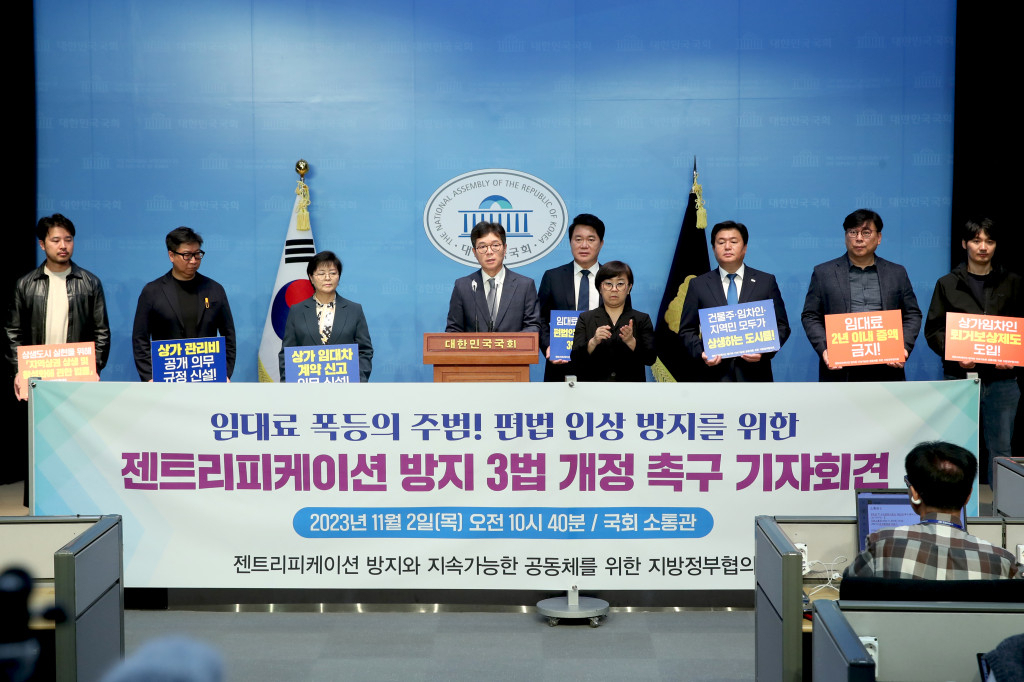
According to the Seongdong-gu Office, rents have risen sharply for commercial districts from October 2022 to February 2023 as the number of visitors and sales revenue in the area have steadily increased. While the average rent was 100,000 won ($76) per “pyeong” (one pyeong is equal to about 3.3 square meters) in 2018, they rose around 50 percent in 2022, reaching 150,000 won.
Chong called for a revision of the Regional Commercial Area Act to serve tenants and local residents affected by gentrification. Additionally, he advocated that commercial buildings be legally obligated to report leases under the Act on Report on Real Estate Transactions -- which currently only applies to residential leases.
“There are still too many loopholes by law to prevent gentrification completely,” said Chong during the press tour in October. “The following three revisions to the three laws will provide an institutional foundation for preventing gentrification and creating sustainable cities for coexistence.”
This article is the first installment in a series of feature stories and interviews that delve deeper into the hidden stories of Seoul's 25 districts. -- Ed.





